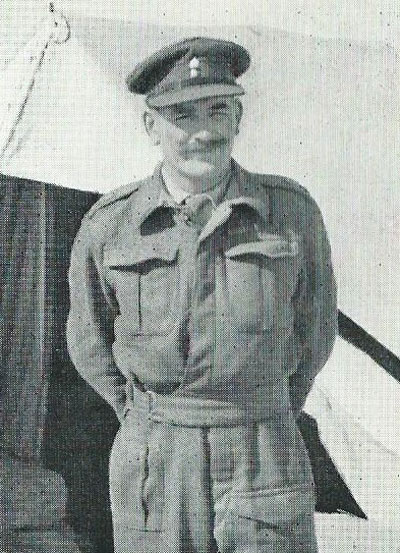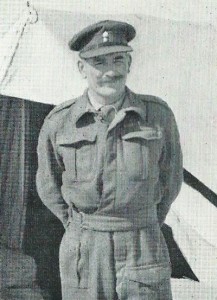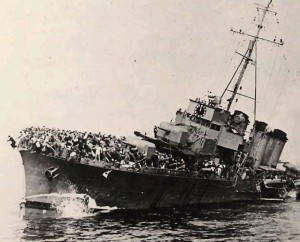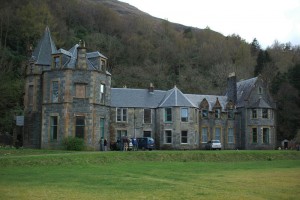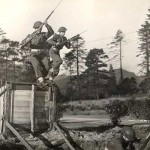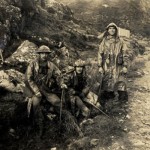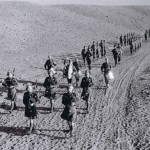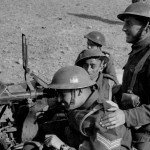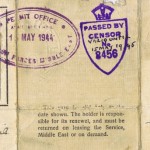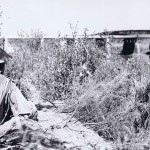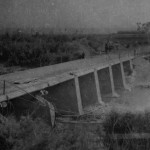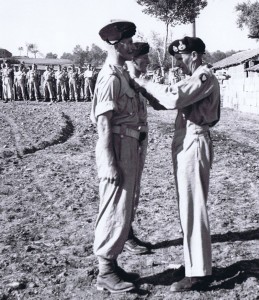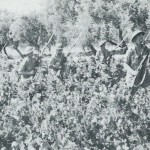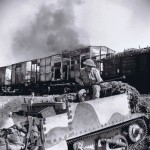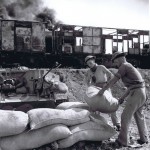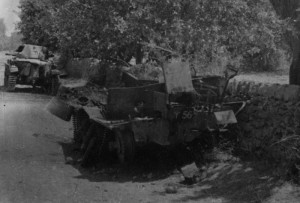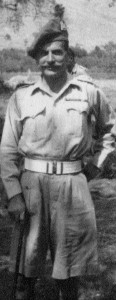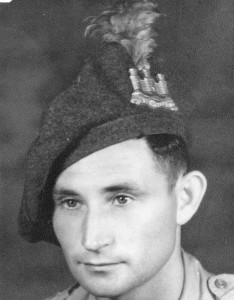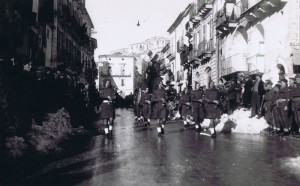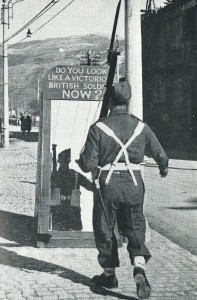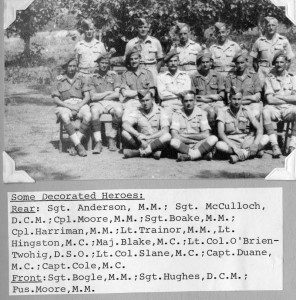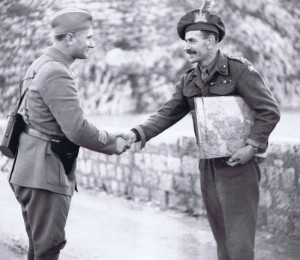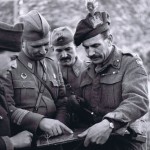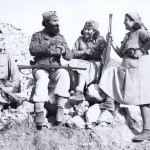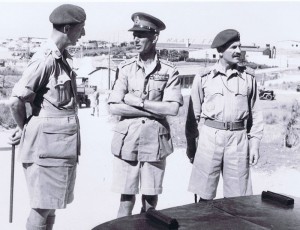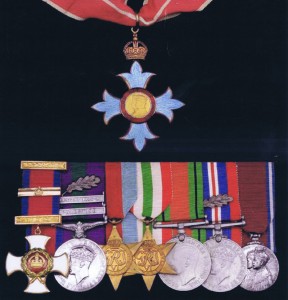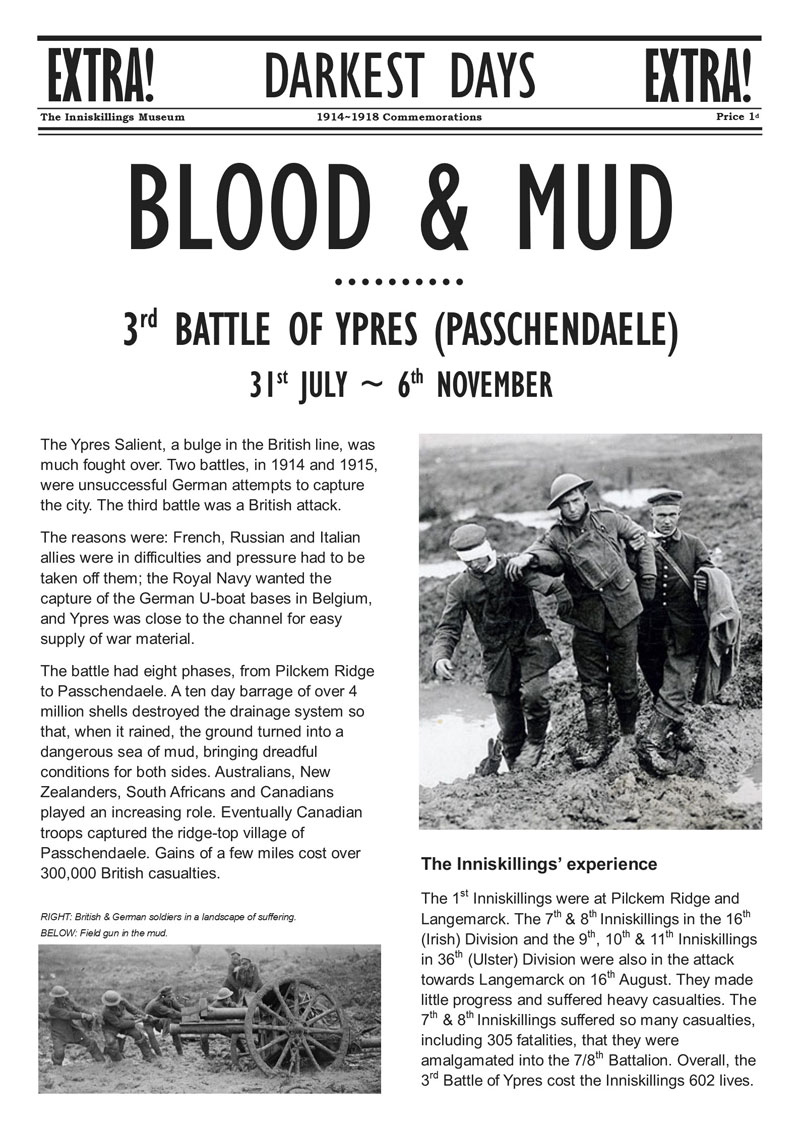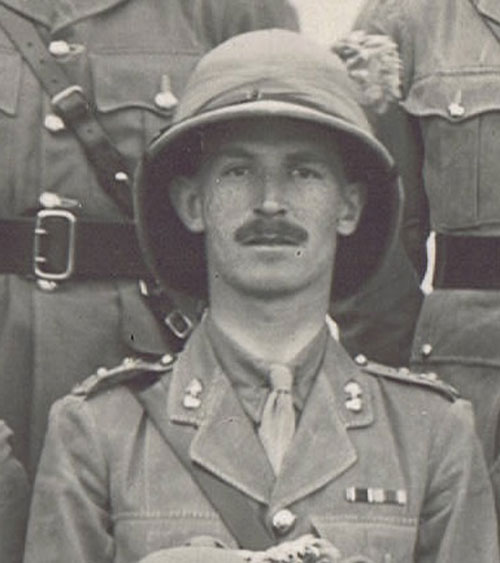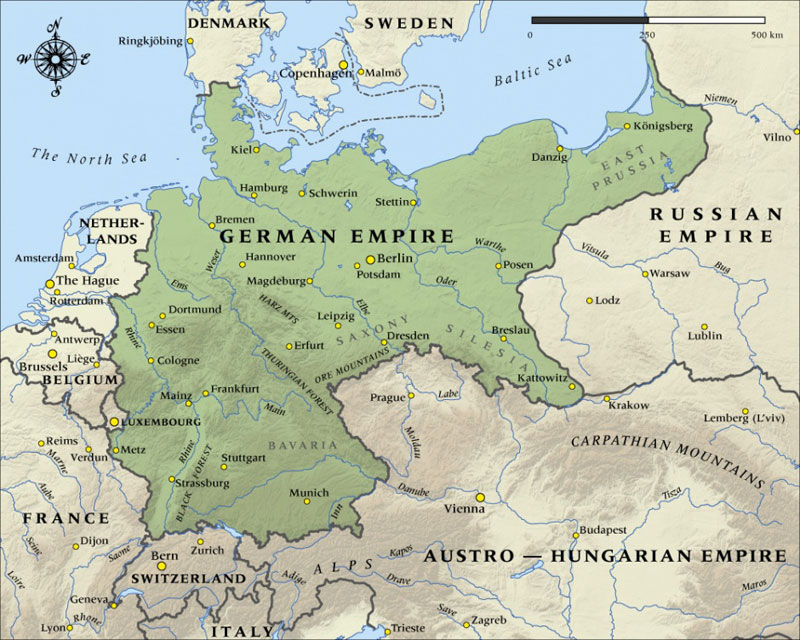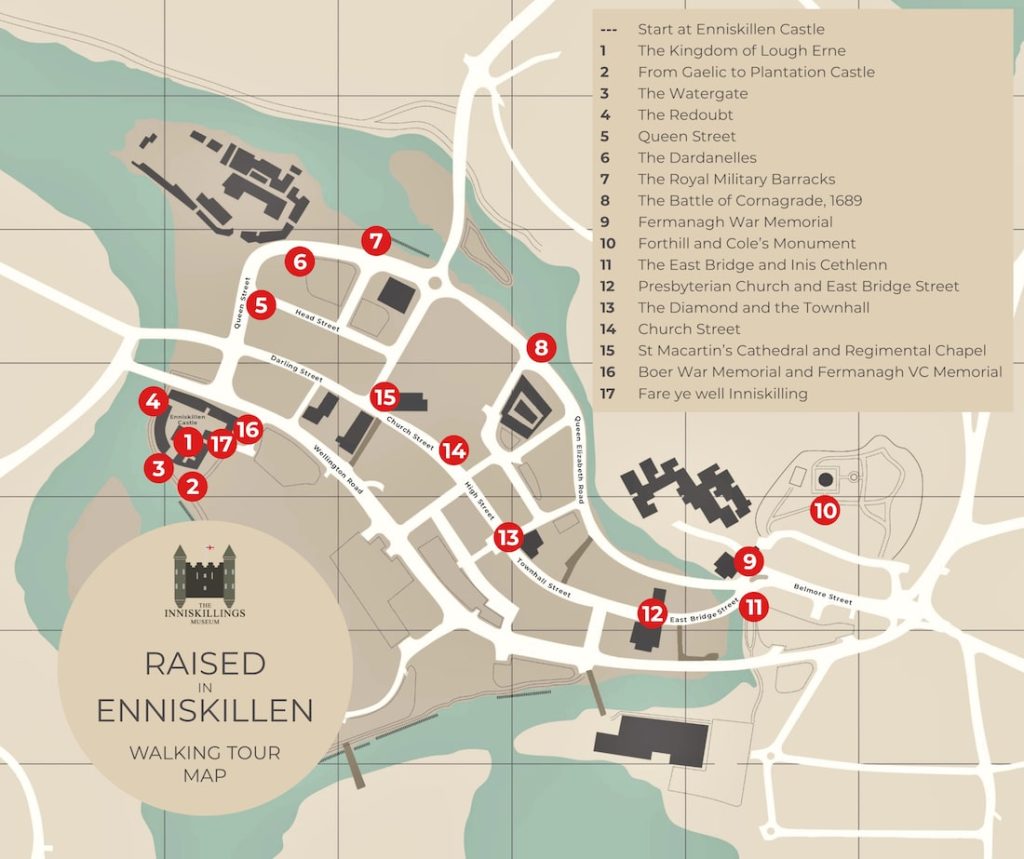A charismatic and determined leader.
Patrick Twohig was born and raised in Dublin, youngest son of John Patrick Twohig, and his wife Ellen, née O’Brien. He had three brothers and one sister.
He attended Trinity College, Dublin, enrolling in 1920, and obtained a Humanities degree and a Law degree, before reading for the Bar. Too young to be called to the Bar in Ireland, he took a commission in the British army. This he decided was the career for him.
He was commissioned 2nd Lieutenant in 1926 into the King’s Own Yorkshire Light Infantry. His first years were with the Army of Occupation in Cologne and then five years, 1929-1935, in the Gold Coast, West Africa, with the Royal West African Field Force. This was followed by two years in Gibraltar in the West Yorkshire Regiment and then adjutant in the TA. He joined the Inniskillings in 1938 with the rank of captain.
On the outbreak of war he was appointed to Field Marshal Brooke’s staff and went to France with the BEF with the rank of acting Major. His unit was among the last to be evacuated from Dunkirk, his own escape being quite eventful. The first two ships he got on to were bombed, but he reached England safely on the third.
His next appointment was to command a Commando – type training school in Scotland. The training was tough, men remembering it as a hell on earth.
- Commando Training in Scotland
- Commando training
- Preparation for the worst
From April 1942 to January 1943 he also commanded the 7th Worcestershire Regiment before it went to Burma, and worked in a Combat Training Centre in India.
With the Inniskillings
He was appointed to command the 2nd Inniskillings in November 1942, a command he held until January 1944.
He joined the Battalion in January 1943 in Qum, Iran where it was part of British forces guarding vital oil supply pipelines.
- Iran 1943, route march led by the pipers
- Iran 1943, training on anti-tank gun
In February, the Battalion moved to Iraq, then to Damascus in Syria and then in April to Tripoli in Lebanon. There was intensive training in the mountains before it moved in June to El Shatt in Egypt for amphibious training and for the final preparations for the allied invasion of Sicily.
- Egypt 1943, ID Card
- Officers at Port Tewfig, Egypt, prior to embarkation for Sicily
- Egypt, Jun 1943, El Shatt with General Montgomery
Sicily
The 2nd Inniskillings, part of 5th Division in General Montgomery’s 8th Army, landed unopposed on the beaches of eastern Sicily, south of Syracuse on 10th July 1943. The campaign lasted 32 days, first against the Italians and then against more difficult German resistance.
On 18th July the Battalion was ordered to capture a new bridgehead over the river Simeto, south of Catania. The bridge, Lemon Bridge, was secured then lost and then re-captured. Moving about with complete disregard for intensive enemy fire, O’Brien Twohig was always at the place where the threat was greatest, encouraging and inspiring his men by his own coolness and determination. At one point he went forward alone to reconnoitre the bridge.
- Sicily, Aug 1943, the Lemon Bridge
- Lemon Bridge
- O’Brien Twohig’s car crosses the Simeto River
For his courage, determination and leadership he was awarded the DSO (Distinguished Service Order).
- Inniskillings advance through a vineyard
- 1943 Sicily, Inniskilling Bren Gun Carrier with a soldier preparing an anti-tank rifle
- Inniskillings unloading bags of rice from a burning train
Italy
In September, again in 5th Division, the Battalion landed in southern Italy, again with little initial opposition.
It was while on a short rest period in the town of Vibo, Valentia that O’Brien Twohig commanded that all officers, when not wearing a steel helmet, should now wear a caubeen. This had hitherto only been worn by pipers. Greatcoats of Italian officers, which were of grey/green colour, provided the material, and a local blacksmith fashioned the Inniskilling badge, first in lead, but later in tin and the hackle was dyed chicken feathers.
Another action typical of O’Brien Twohig occurred in November during the assault on the important town of Isernia. American and other British units were closing in. Twohig sent on a patrol of the Inniskillings armed with paint, a brush and stencil of the Enniskillen castle. When American patrols, thinking they were first, entered the town they found the walls and a large unexploded bomb in the town square liberally emblazoned with the castle of Enniskillen.
Later in the month the Battalion occupied the town for a period of rest in reserve. In another typical O’Brien Twohig decision, a full length wardrobe mirror was erected on the pavement outside Battalion HQ. Above the mirror was painted the question “Do you look like a victorious British soldier now?” This had the required effect on senior officers visiting HQ.
17th/18th January 1944: Crossing of the river Garigliano. German Gustav Line.
The operation involved crossing the river in assault boats, traversing a broad expanse of plain held by machine gun posts and finally taking the ridge which was very steep and woody, protected by entrenchments and minefields.
Almost all the Inniskilling boats were destroyed by enemy artillery fire. O’Brien Twohig led his men to another crossing and got them across using another battalion’s boats. The Inniskillings, in spite of heavy casualties, stormed the ridge and captured their objectives. When a German counter-attack drove them off one of them, he personally reorganised them and recaptured the position.
During the advance, he was painfully wounded in the neck but refused all offers of assistance and evacuation, insisting on continuing to command and lead his men.
He was awarded a Bar to his DSO.
He continued to command the Battalion in the difficult weeks as the Gustav Line was attacked.
On 26th January he was ordered to hospital for proper attention to his wound
Later military career
He finally left the Battalion permanently in March 1944 for further treatment, which this time was quite prolonged.
In May 1944, in the church of San Castellamare, near Naples, he married his second wife, a Queen Alexandra’s nurse, Maureen Blake of Galway, sister of Major Percy Blake, OC ‘C’ Company 2nd Inniskillings. She wore an afternoon dress instead of uniform and he wore his service dress accompanied by his flamboyant orange socks. The honeymoon was in Capri.
On his return to service he had a three month spell as a staff officer, and then in September he was appointed Brigadier to command the Adriatic Brigade in the closing months of the war. He had to deal with the Yugoslav communist partisans in Vis and Montenegro and Greek insurgents in the Peloponnese. Most were anti-British. Through his efforts and determination he overcame much of the obstinacy and obstruction of the partisans and gained their respect and cooperation. He made a significant contribution to the outcome of the war in the Balkans.
- With partisans
- Italy 1945, with the partisan leaders
- Yugoslav partisans
For this he was awarded a CBE (Commander of the Order of the British Empire.)
After the war, in 1947-48, he commanded 2nd Parachute Brigade Group in Palestine and then 28th Infantry Brigade. He retired in 1950 and went to live in the Isle of Wight.
He received three Mention in Despatches gallantry awards — 1940, 1945 and 1950.
As described by one of his Inniskilling officers: He had a powerful, pleasant voice, and a curt manner. A man of enormous vigour and inspiring personality, mercilessly demanding, widely admired and a little feared. He uses the language of a trooper and outdrinks us all.
Or “There once was a sharp tempered colonel
Whose curses were lewd and infernal……”
In his own words, “As a CO one more or less has to be a bit of a bastard, but though you may not think it, I feel an awful pain for the loss of chaps I was so fond of. And the more one feels it, the less one dares show it”.
(With thanks to Sir David Cole, “The Rough Road to Rome, 1943-44”
Captain David Cole, MC was Battalion Signals Officer with 2nd Inniskillings)
Brigadier Patrick O’Brien Twohig’s Medals,
Top Centre: Commander of the Order of the British Empire (CBE)
Left to right: Distinguished Service Order and Bar (DSO); General Service Medal with clasps Palestine and Palestine 1945 – 1948, and Mentioned in Despatches oak leaf (MID); 1939 – 45 Star; Italy Star; Defence Medal; War Medal 1939-45, and MID oak leaf; Jubilee Medal 1935.

